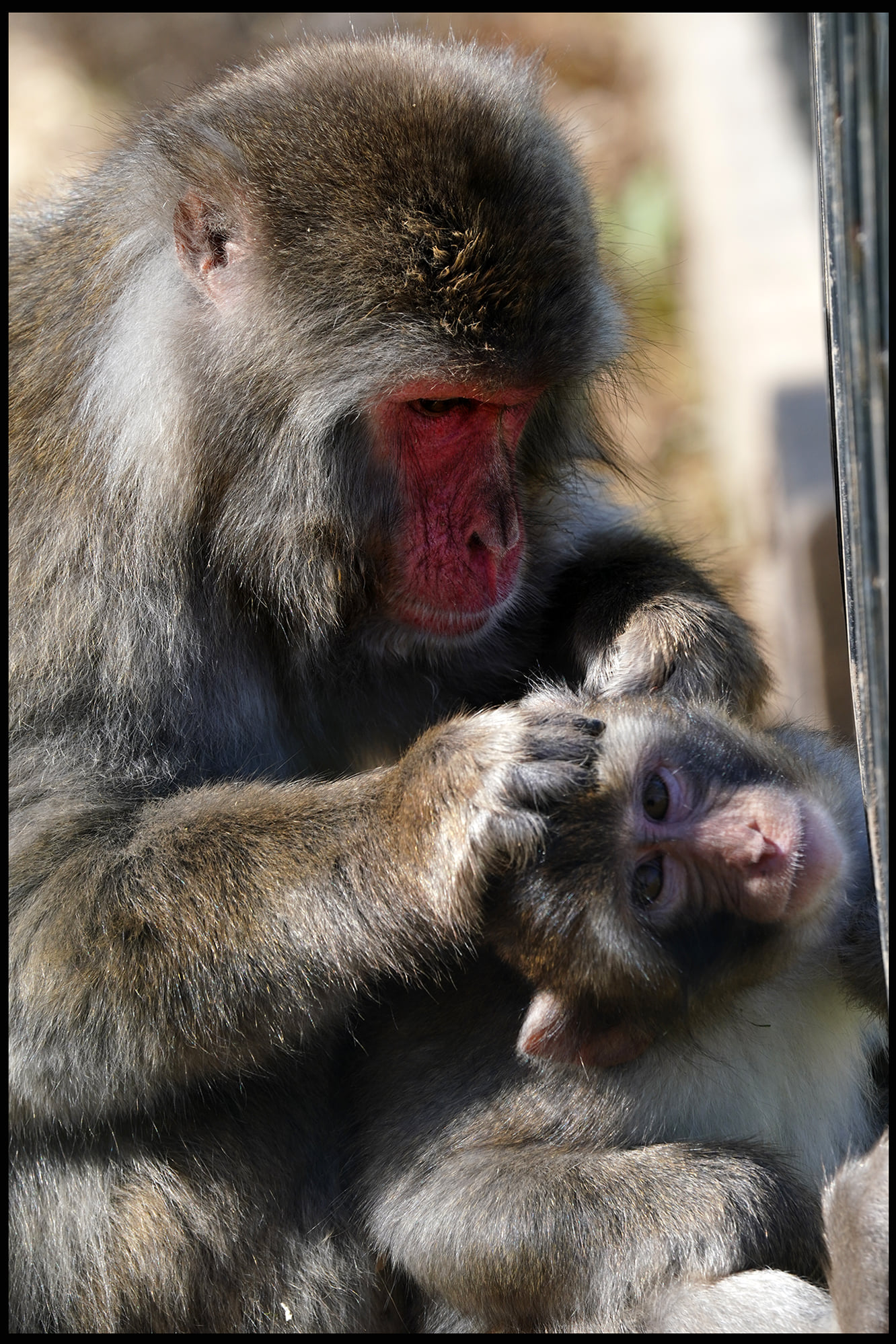Japanese Snow Macaque

The Japanese macaque is diurnal, variably spending the daytime foraging, travelling, socially interacting and resting. It is an unfussy eater and its diet varies with habitat and season. Typically, it feeds on leaves, fruit, berries, seeds, small animals, insects and even fungi.
As with all species of macaque, the Japanese macaque lives in large social groups known as ‘troops’. Group size can vary greatly, with an average troop containing around 41 individuals. Troops that are provisioned with extra food have been known to reach as many as 700 individuals. Within the troop, the females are maternally related, while male Japanese macaques transfer between troops. There is a strict dominance hierarchy, with lower ranking individuals having less access to resources such as food. A young female macaque inherits its mother’s rank, and is also dominant to its younger siblings
With its thick coat, the Japanese macaque can survive winter temperatures of -15 degrees Celsius. However, it is probably most well known for its habit of sitting in natural hot springs in order to escape the winter extremes. Japanese macaques are also thought to display ‘culture’, where a learned behaviour is passed through the troop. The most famous example of this is where a young female in a provisioned troop began washing potatoes and wheat in sea water. This behaviour was transmitted to other members of the troop and has since been passed on to subsequent generations.
